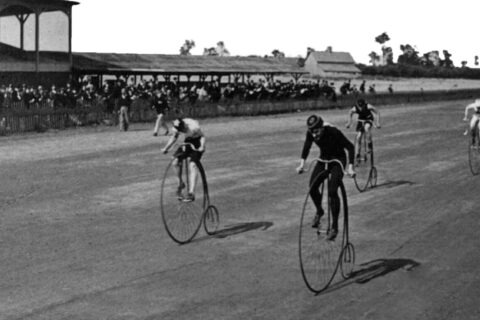Start from the beginning: Part 1: My Daughter’s Long Road Back to Health
Learning what kind of training program and cycle works best can be an incredibly individualized process, as Dr Stephen Seiler and daughter Siren talk about in this video. While some athletes thrive on a seven-day cycle, others do better with a 10-day cycle, as Siren discusses here as she discovers the latter works best for her training and for some of the athletes she’s coaching. Having the time—or “air”—to build recovery/easier days between harder sessions is key to adaptation, progress, and longevity, as both father and daughter agree upon here.
Video Transcript
Siren Seiler 0:02
Every athlete should really learn how to listen to their body and to trust themselves. Because I can be the—I’m not like an expert on anyone’s body, or it’s only you who knows your own body the best.
Dr. Stephen Seiler 0:18
Right.
Siren Seiler 0:18
So, you know often what is the right answer, but it’s nice to have someone to kind of talk to and to agree on what’s best or get confirmation and stuff. But the most important thing is to not try to make up for stuff, like, and don’t get too stressed about missing a session. Like, doesn’t matter at all in the long term. [laughs] You have a lot of days ahead.
Dr. Stephen Seiler 0:45
Right. And there’s two points I hear there. And I recall as being your coach that often I found that you knew, intellectually, what the right answer was when you asked me a question. “Now, Papa, should I do this hard session? I’m not feeling so good.” You know? And but what you needed was just a confirmation, to say, to give you permission to give yourself a break. To give you permission to deviate from the plan.
And that’s often the role of the coach, is it’s not the intellect that is missing. It’s just the emotional confidence to make the decision to say, “You know, I’ve got to drop that workout. It’s okay.” And then that second point, which you just talked about is that, look, in the big scheme of things, this one workout is going to—not going to be a big issue, because you’re training hundreds of times in a year.
Siren Seiler 1:35
Yeah.
Dr. Stephen Seiler 1:36
Even someone training just three days a week—just three days a week—is adding up 150 workouts in a year, you know? And some of the people who are—they’re training 500, 600 times in a year. So in that scheme of things, the one workout is not—is such a tiny percentage of the big picture.
Siren Seiler 1:58
Mm.
Dr. Stephen Seiler 1:59
And I think one of the things we talked about, and we’ve talked about together, is that what’s the most common mistake the athlete will make, it won’t be failing to train, it will be trying to squeeze in too much. They missed a workout, so now they’re going to double down, right? And try to double up within that same space, the same number of days.
Now you as an athlete, and I as your coach, we’ve experimented. We’ve had the seven-day cycle—the normal weekly cycle—we’ve had 10 days, we’ve had nine, and now currently you are using eight days as your kind of repeating cycle of planning. And the whole point of using eight or nine or 10—or maybe the triathlete might even use 14 days—is just to create sufficient space or air in the program, right?
Siren Seiler 3:01
Yes. Yeah, I have experience with a lot of different structures, you could say. In the beginning, I only trained on seven days. But I remember very clearly that when my volume started to increase, I was, like, struggling each week to kind of plan out my week because it never felt right. Like, because if I put my hard day there, or like Friday and Tuesday, I would have to do my long run on, like, Saturday. Or if I were to have a rest day on Sunday, and then I’d only have one day in between before a new hard session. So it was like I didn’t have enough days in a week.
Dr. Stephen Seiler 3:53
Right.
Siren Seiler 3:54
And it took a long time before I, like, even dared to think of the idea of, “Oh, maybe I can extend the week.” But for me the beginning was a little bit like, that was weird, because then no session would ever fall on the same day almost. So I was really scared. But when I started to get into the routine it’s like I started to feel training flow like it wasn’t—I didn’t feel stressed anymore. And even now I can train without the plan because I basically know what to do. And it’s just—it feels right. I know when I’m ready for a hard session.
And so in terms of this year and with my athletes, I think kind of what decides whether you should have, like, seven days or more is mostly volume and how much training you try to squeeze into one week. And in the beginning of this year I trained on a seven-day cycle with one rest day per week and one hard session, which worked well. And also for some of my athletes, that works very well, because they train maybe four or five times a week or even six times a week. But we don’t add in two hard sessions. Maybe one proper hard session and one long run and that will be two hard workouts on the body. And maybe some strides one day and that’s when they kind of get up in a higher weekly training hours. Then I find to just extending the cycle to, like, eight days, that’s very useful, because then you can do high volume and you can get in more intensity. Like not two every week, but it will almost be two hard sessions every week and you just get, like, that one extra day rest or one extra day easy.
And yeah, so I think that, I think it works very well. And it’s weird how few athletes, like, are runners, especially in Norway. That is very uncommon. The seven-day cycle with the typical, like, Tuesday-Thursday-Saturday intervals is very much used. And I think a lot of people can get more progress and avoid these small injuries or burnouts. Every now and then we’re just kind of allowing a little bit more air in the program or recovery, actually,
Dr. Stephen Seiler 6:40
But it’s culturally challenging because we—we’re kind of programmed to the long Sunday run or…
Siren Seiler 6:46
Yeah.
Dr. Stephen Seiler 6:46
You know, it just, it fits into the work schedule and even facility schedules for people who are swimming or in an indoor facility that might be closed on Sunday or whatever. So there’s these—there are issues and I think both of us are very clear on that. But just mentally allowing yourself to stretch out the plan and realize that seven days is not biologically in stone or anything. In fact, it’s absolutely not. So although our biology probably can start to get tuned in to a certain—for sure a certain pattern like a seven-day pattern, I think all of us experience that. You know, when we have the day off we sleep longer, things like that.



